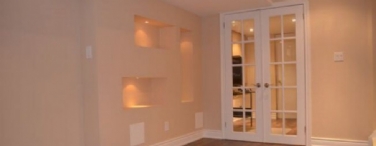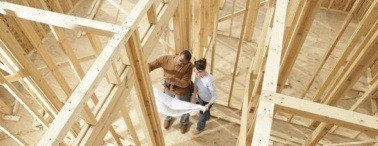
In today's evolving real estate world, homeowners are increasingly seeking creative ways to make the most of their properties in terms of value and functionality. Accessory Dwelling Units (ADUs) have become an approach that allows homeowners to unlock hidden potential, generate income, and accommodate multiple generations under one roof. In this guide, we will explore the advantages of ADUs, considerations for designing them, regulatory aspects to keep in mind, and practical tips for homeowners who want to capitalize on this trend and transform their properties into thriving and multifaceted assets.
Understanding Accessory Dwelling Units (ADUs):
ADUs, also referred to as granny flats, in-law suites, or secondary suites, are equipped units that are situated on the same property as the main house. These units can take various forms, such as buildings, converted garages, basement apartments, or even tiny homes. The specific type of ADU depends on regulations and the preferences of homeowners. ADUs typically consist of living spaces, kitchens, bathrooms, and their own entrances. They provide individuals with their living quarters while still maintaining a sense of privacy and autonomy for tenants, guests, or family members.
Benefits of ADUs:
There are various benefits to including ADUs in a property portfolio. For homeowners, ADUs provide a chance to earn rental income, to help offset mortgage payments or fund property upgrades. Additionally, ADUs can increase the value of a property and offer housing options that cater to changing lifestyle needs. This includes providing space for aging parents, adult children, or home-based businesses. From a community standpoint, ADUs contribute to housing affordability, promote sustainable urban development, and create diverse and inclusive neighborhoods by addressing housing shortages and expanding the range of available housing options.
Design Considerations:
When it comes to designing an ADU, there are factors that need to be taken into consideration. These include the site characteristics, zoning regulations, budget limitations, and the intended purpose of the ADU. Homeowners should carefully consider how the space will be used, its functionality, accessibility, and overall aesthetic appeal in order to ensure that it is both livable and marketable. It's also important to think about principal design factors, like floor plans, plenty of natural light, durable materials, incorporating energy-efficient fixtures, and even considering outdoor amenities. By incorporating these design components and following building codes, homeowners can create ADUs that seamlessly blend with their existing property while enhancing its overall attractiveness. For those seeking assistance with the design process, we invite you to post your project on TrustedPros. We will match you with design professionals who specialize in ADUs.
Regulatory Landscape:
Understanding the rules and regulations related to accessory dwelling units (ADUs) can be quite challenging due to the significant variations across jurisdictions. Homeowners need to familiarize themselves with zoning ordinances, building codes, permit requirements, and land use regulations that govern aspects like ADU construction, size, setbacks, parking, and occupancy. While some areas have simplified approval procedures and even provide incentives to encourage ADU development, others have restrictions and bureaucratic processes. To ensure compliance and a seamless approval process, it is crucial for homeowners to consult with planning departments, building officials, and experienced professionals in this field.
Popularity and Adoption:
In recent years, ADUs have gained traction across Canada as an innovative housing solution to accommodate changing demographics, lifestyle preferences, and affordability concerns. The province of Nova Scotia is offering a Secondary and Backyard Suite Incentive Program, and British Columbia is offering a Secondary Suite Incentive Program (SSIP) beginning in April 2024. Check with your provincial government for incentive programs available in your area. As ADUs become increasingly mainstream, architects, builders, and homeowners are embracing creative designs, sustainable practices, and modular construction techniques to meet growing demand.
Practical Tips for Homeowners:
For homeowners considering ADU development, several practical tips can help maximize the success of their projects:
- Conduct thorough research: Familiarize yourself with local regulations, market demand, financing options, and construction costs before initiating an ADU project.
- Seek professional guidance: Consult with architects, designers, and building professionals experienced in ADU development to navigate the complexities of the process effectively.
- Develop a comprehensive plan: Create an elaborate project plan outlining your goals, budget, timeline, design preferences, and potential challenges to guide the development process.
- Consider financing options: Explore financing options such as home equity loans, construction loans, or government incentive programs to fund your ADU project.
- Give precedence to quality and sustainability: Invest in high-quality materials, energy-efficient systems, and sustainable design practices to enhance the longevity, comfort, and value of your ADU.
- Market your ADU efficiently: Formulate a marketing strategy to attract potential tenants or buyers, highlighting the unique features, amenities, and benefits of your ADU.
Conclusion:
Accessory dwelling units (ADUs) offer homeowners an opportunity to enhance the value and practicality of their properties. These units can address the pressing housing challenges we face today while fostering inclusive communities. By embracing the versatility of ADUs, homeowners can tap into their hidden potential, generate income, and create living arrangements that adapt to their evolving needs and goals. Whether you're considering ADU development as an investment, a solution to housing affordability, or a lifestyle upgrade, this guide provides you with the knowledge, insights, and pragmatic tips necessary to embark on an ADU journey. With these resources at your disposal, submit your project on TrustedPros and convert your property into a versatile, multi-dimensional asset positioned for enduring prosperity.
Posted by: TrustedPros





